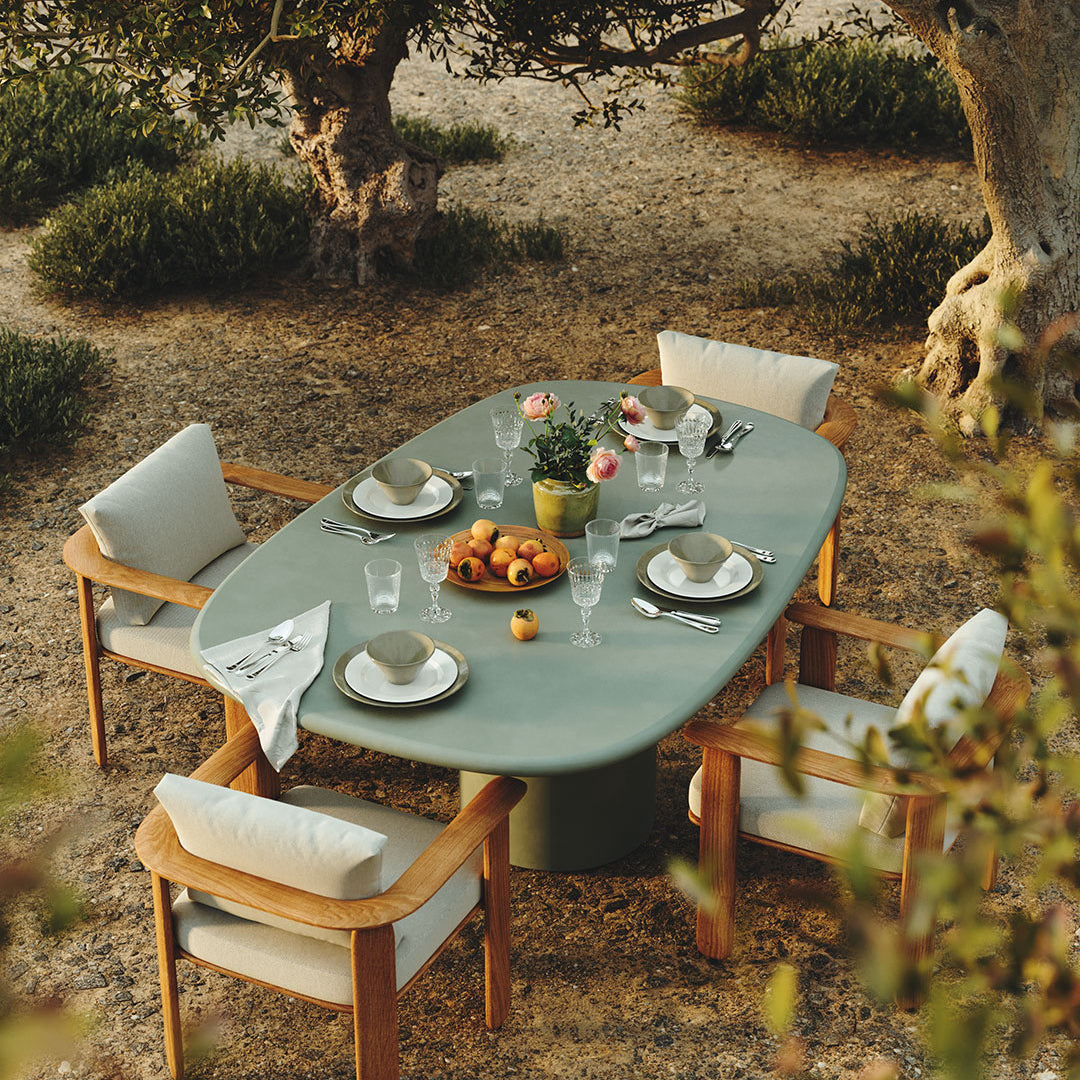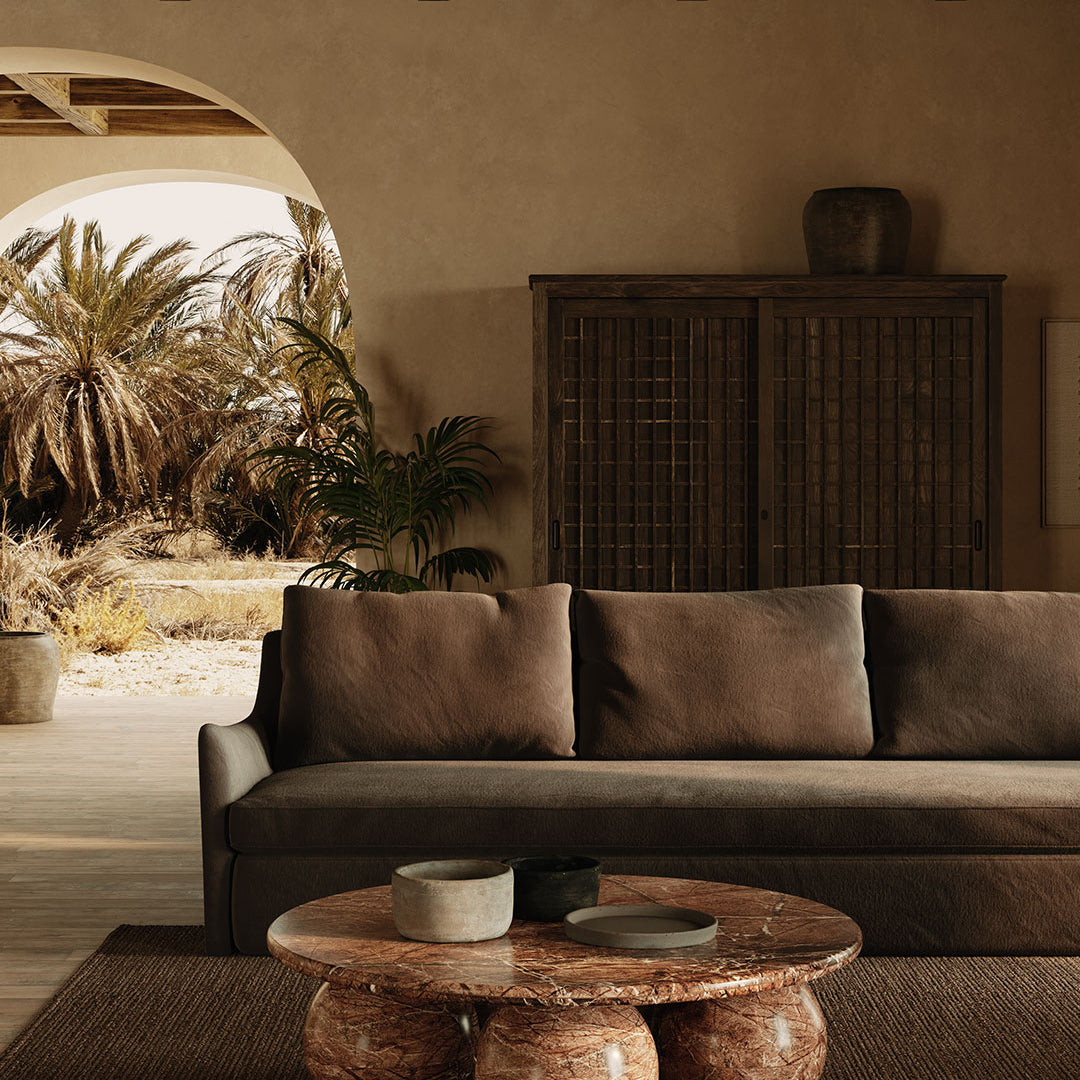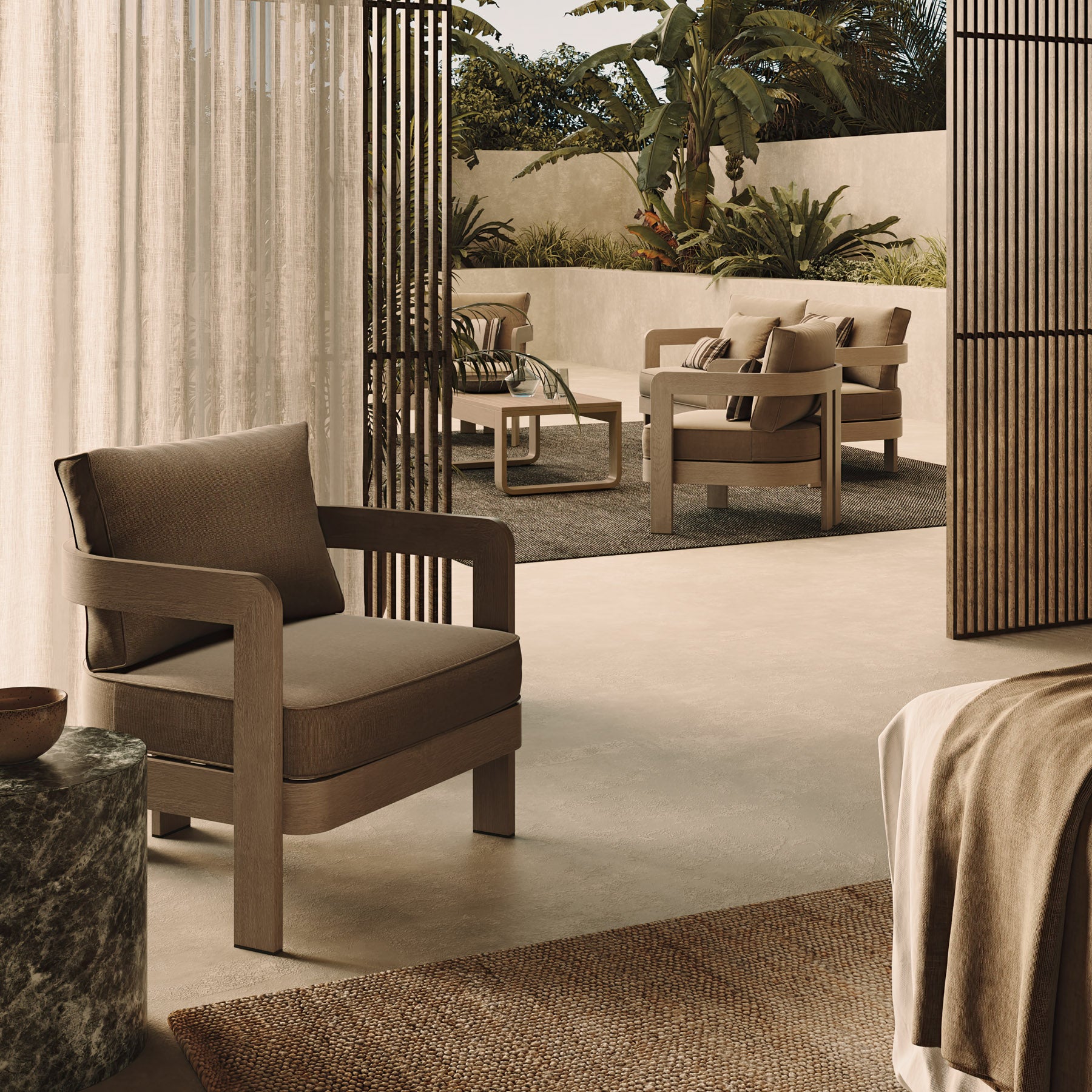For the design-conscious homeowner, your garden is a chance to blend the look and feel of your interior with the intricate beauty of nature. Creating a seamless feel between indoor and out, while also blending your design with the natural world might seem a challenge – but it’s not impossible.
Biophilic design and organic architecture are two related, but distinct philosophies that are playing an increasingly important role in luxury outdoor furniture design. These styles are aiding both homeowners and interior/exterior designers when it comes to harmoniously combining human structures with nature.
Read on to find out more about how to embrace and apply these principles in your own organic landscape design.

What is organic architecture?
Organic architecture is a philosophy wherein human habitation and the natural world are closely intertwined. Applicable as much to building design as to your garden’s landscaping, organic architecture aims to seamlessly integrate design into the surrounding natural environment.
Typically, this means site-specific design – allying your garden to the area’s natural features and climate, as well as the resident flora and fauna.
Organic architecture also dictates that every element, from the structure of your building to the furniture, lighting and décor, is designed as part of a unified whole.
Harnessing modern organic architecture
Practically speaking, the principles of organic architecture can be applied in a number of ways, provided that you are considering the bigger picture and taking note of how every element of your building and its outdoor area combine harmoniously.
Using organic materials in your furniture and detailing is vital in unifying your living space and the natural world around it. Wood, natural stone and glass can all be used to stylish effect.
Organic architecture also looks to utilise the form of nature, embracing curves, asymmetry and fluidity, rather than leaning on boxy, man-made design. Biomimicry is a key aspect of organic architecture, so turn to our N3 Collection’s gracefully curved structure and powder-coated, wood-look aluminium finish to capture this design in your own outdoor space.
Biophilic design in your garden
Biophilic design is a similar, but distinct principle from organic architecture. While both revolve around the integration of our lives into nature, biophilic design is more focused on the idea of the human connection with nature.
Regular interaction with nature is known to improve our mental health and reduce anxiety – biophilic design is one of the ways in which we can integrate nature into our home and garden designs, and thereby our lives.
Biophilic design typically revolves around three key principles:
Direct connection to nature
Achieve this connection by bringing nature into your space. Outdoor living rooms, using outdoor sofas and comfortable lounge chair seating, will help bridge the gap between indoor and outdoor.
Indirect connection to nature
Use representations of nature to create calming effects. This might be through the use of natural materials that invoke the idea of nature, such as the handwoven natural rope detailing on show in our N2 Collection or the seamless combination of natural teak and rope in the N6 Collection.
Spatial and sensory experience
This aspect of biophilic design is more about the way that your furniture pieces and garden accessories are placed, and how they interact with each other. Your outdoor space should be designed to mimic natural landscapes, reducing stress and creating comfort. Try to think about multi-sensory engagement here too – garden additions, such as water features and scents from your plants, will help complete the biophilic atmosphere in your garden.
What is the best natural material to use for biophilic design?
From both an aesthetic and practical point of view, teak is a great material to work with when designing a biophilic garden. The wood’s natural sheen provides a stylish look that easily integrates into the world around it, while the high presence of natural oils within the wood means it’s resistant to damage from the elements.
Designing a vertical garden
Using verticality in your garden design is another way to support biophilic style, mirroring the height of trees, sprawling shrubbery and climbing vines.
Vertical gardens, where plants are housed on walls and fences to cover buildings and other man-made features, are an excellent method of doing so, realigning your building’s structure with nature.
How to build a vertical garden
To build a vertical garden, position planters on the brickwork of houses and the woodwork of fences. For a truly organic look, avoid planters that use man-made materials, like metal or plastic, opting instead for wood or lightweight rattan. Be sure to affix these properly to avoid any health and safety issues.
Use trailing climbers, like pothos, philodendron and spider plants, which are hardy and low-maintenance. Or, for a burst of colour, look no further than orchids, begonias and petunias.
Vertical gardens also provide an opportunity to satisfy the scent aspect of a sensory garden – opting for herbs and edibles, like mint, basil or thyme, will add a pleasant scent to your garden experience.
Under the principles of organic architecture, vertical gardens are best used alongside typical gardens of varying heights, mimicking the variety you would see in nature. Try combining floor-level flower beds with our stylish luxury planters and use a vertical garden to create a three-dimensional tiered experience.










